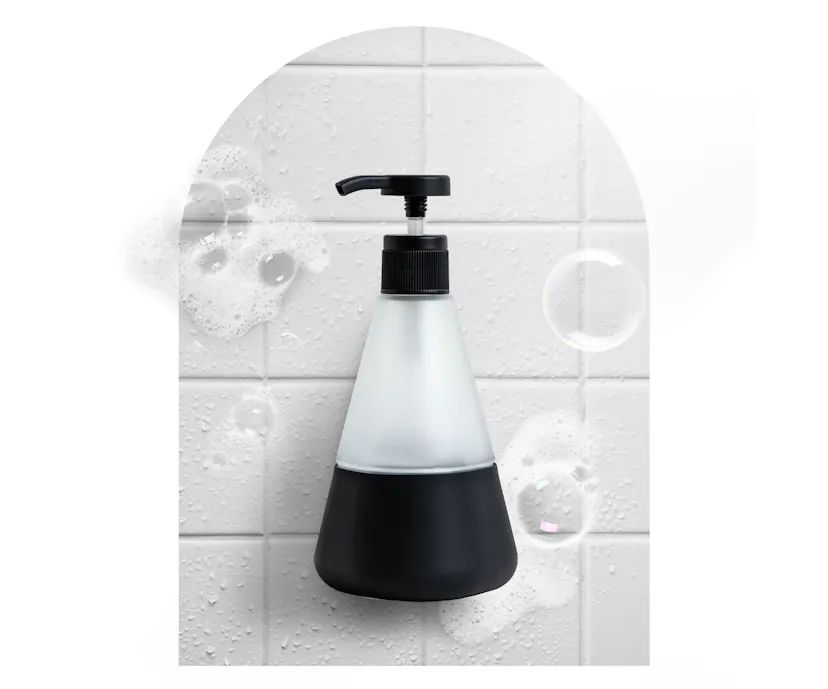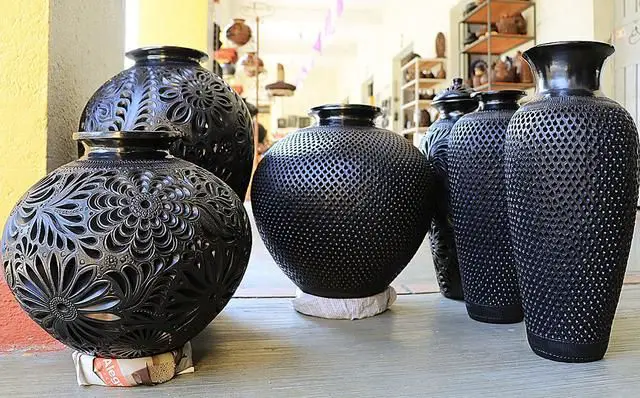Are Soap Dispensers Worth It?
Soap dispensers are commonplace in many homes and public bathrooms as a convenient way to dispense soap. But are they really necessary? This article provides an objective overview of soap dispensers, analyzing the pros and cons to determine if they are truly worthwhile investments. The purpose is to help readers decide if installing soap dispensers is the right choice for their bathrooms, kitchens, or other areas that require hand washing.
History of Soap Dispensers
Soap dispensers first came into use after liquid soap was patented in 1865, when the Minnetonka Corporation introduced the first liquid soap dispenser (https://www.pykal.com/blogs/home-and-kitchen/soap-dispenser-101-history-and-the-best-types-over-time). Before this invention, soap was commonly sold as a bar that needed to be periodically wetted and applied by hand.
The first soap dispensers worked via a manually-operated pump mechanism that allowed users to dispense a small amount of liquid soap with one hand. This was more convenient and hygienic than using a communal bar of soap.
Over time, soap dispensers evolved to use newer pumping mechanisms and valve technology. This allowed for precise soap dosing and hands-free operation. By the 1950s, automatic soap dispensers started emerging (https://en.wikipedia.org/wiki/Soap_dispenser). These dispensers could automatically detect the presence of hands and dispense soap without needing to be manually activated.
Modern soap dispensers use infrared sensors, electric solenoid valves, and other technology to provide touchless, efficient soap dispensing. Many are now designed to be more environmentally friendly by minimizing waste and using recycled materials in their construction.
Today’s soap dispensers come in a wide array of styles, sizes, and colors to match different decor aesthetics. Their core functions remain dispensing soap hygienically, conveniently, and efficiently.
Types of Soap Dispensers
There are several common types of soap dispensers used in commercial and residential settings:
Wall Mounted
Wall mounted soap dispensers are designed to be attached to a wall near a sink. They often have a large reservoir and many operate automatically using a sensor when a hand is placed underneath. Wall mounted soap dispensers are sturdy, have a small footprint, and are easy to refill (Types of Soap Dispensers: Manual vs. Automatic).
Counter Top
Counter top soap dispensers sit on the counter or sink ledge. They come in a wide variety of styles and sizes. Counter top dispensers allow for easy access to soap, but take up space on the countertop. They usually hold less soap than wall mounted versions (3 Types of Soap Dispensers for Commercial Bathrooms).
Automatic
Automatic soap dispensers use a sensor to detect when a hand is under the spout and dispense a pre-measured amount of soap. They promote hygiene by reducing contact with the dispenser. However, they require batteries or wiring. Malfunctions can lead to wasted soap or no soap being dispensed (Types of Soap Dispensers: Manual vs. Automatic).
Manual
Manual soap dispensers require the user to press a pump or lever to dispense soap. They are simple, inexpensive, and don’t require batteries or electricity. However, they involve more physical contact with the dispenser which can increase the spread of germs (3 Types of Soap Dispensers for Commercial Bathrooms).
Pros of Using Soap Dispensers
Soap dispensers provide some key benefits compared to traditional bar soaps. Firstly, dispensers are more hygienic as they don’t require multiple people to handle the same bar of soap, reducing the spread of germs. According to CWS, touchless soap dispensers in particular “provide effective hygiene protection” by eliminating the need to touch surfaces after handwashing (source).
Secondly, dispensers allow for better portion control than bar soaps. Built-in dispensers with calibrated dispensing mechanisms encourage controlled soap usage, leading to reduced waste (source).
Lastly, soap dispensers are aesthetically pleasing, with sleek and modern designs that can complement contemporary decor. Their visual appeal makes them an attractive option compared to a bar of soap.
Cons of Using Soap Dispensers
While soap dispensers provide some benefits, there are also some downsides to consider. Two of the main cons are the higher upfront cost and the need for maintenance and refilling.
Soap dispensers, especially those that are built-in, tend to have a higher upfront cost compared to bar soap or bottled soap. The dispenser itself needs to be purchased and then professionally installed, which requires plumbing work in most cases. This results in a more expensive initial investment (https://www.wowowfaucet.com/pros-and-cons-of-built-in-soap-dispensers/).
Additionally, soap dispensers need to be periodically refilled and maintained. The soap or sanitizer liquid eventually runs out and needs to be replaced. If the dispenser clogs or malfunctions, repairs may be necessary as well. This creates an inconvenience and additional cost over time. With bar soap, there is no need for refilling or troubleshooting technical issues (https://www.kingstonbrass.com/blogs/blog/pros-and-cons-of-a-built-in-kitchen-soap-dispenser).
Therefore, the higher initial cost and recurring maintenance requirements are two downsides to weigh when deciding whether a soap dispenser is worthwhile.
Cost Analysis
Soap dispensers can seem convenient, but cost is a key factor when considering whether they are worth it. The initial purchase price of a soap dispenser typically ranges from $5-20 depending on the style and quality. However, the ongoing cost of refills and maintenance can add up over time.
According to Business Insider, liquid soap refills are usually more expensive than bar soap per ounce. A 12-16 oz bottle of hand soap refill costs $3-10 on average. In comparison, a standard bar of hand soap can be purchased for under $1 per bar when bought in bulk quantities (www.quora.com). Considering a single bar may last 2-4 weeks with regular hand washing, bulk bar soap can provide more hand washes per dollar compared to dispensed liquid soap refills.
Additionally, some soap dispensers are prone to clogs, leaks, and malfunctions that require replacement parts or entire units over time. Factoring in these maintenance costs in addition to the refills makes soap dispensers a more expensive option long-term compared to bar soap. Bar soap has a lower cost per use, involves no disposable waste from refills, and eliminates the possibility of dispenser malfunctions.
Environmental Impact
The environmental impact of soap dispensers versus bar soap is an important consideration. Liquid hand soap often comes in plastic bottles that contribute to plastic waste and pollution. According to Tiny Waste, hand soap bottles are made from crude oil, a non-renewable resource. Manufacturing these plastic bottles generates greenhouse gas emissions.
In contrast, bar soap has less plastic packaging waste. Bar soap comes wrapped in paper or cardboard, which is more sustainable and eco-friendly. As Tabitha Whiting discusses, bar soap generates less plastic waste compared to liquid hand soap bottles.
However, soap dispensers can be an environmentally friendly option if they are refillable. Refillable dispensers reduce the need for single-use plastic bottles. The dispenser can be refilled from bulk refill packs or large soap containers, generating less waste over time. Maintaining and refilling existing dispensers is better for the environment than continually disposing of soap bottles.

Case Studies
Many offices and businesses have transitioned to using soap dispensers in bathrooms and kitchens. According to a case study from King County’s Green Schools Program, dispensers reduce waste and leaks compared to traditional bar soap (source). The dispensers are given to businesses free of cost and provide foam soap from the top to prevent leaks. San Diego State University also switched to foam soap dispensers and saw significant soap usage and cost savings (Source: https://www.cleanlink.com/news/article/CASE-STUDY-San-Diego-State-University-Achieve-Soap-Usage-And-Cost-Savings–20956).
In home settings, dispensers can provide convenience and hygiene benefits. They allow homeowners to neatly dispense liquid or foam soaps and sanitizers. Dispensers keep counter spaces tidier without bar soap residue. They also allow for precise dispensing to control usage and waste. Many homeowners install dispensers in kitchens, bathrooms and utility sinks for convenience and cleanliness.
Alternatives to Dispensers
Here are some options if you want to avoid using a soap dispenser:
Bar Soap
Using a regular bar of soap eliminates the need for a dispenser. It also reduces plastic waste. However, some people prefer the convenience of liquid soap. Bar soap can also get messy if not stored properly. Switching to bar soap works best for hand washing, rather than showers 1.
Refillable Bottles
Refillable soap bottles and containers are another alternative to soap dispensers. Some companies sell metal or glass bottles that can be refilled with liquid soap. This option reduces waste while still providing the convenience of a liquid soap pump. Just make sure to look for bottles made from recyclable or reusable materials 2.
None
It’s also an option to simply wash hands using just water. This avoids any dispenser or soap. However, using soap helps remove pathogens and is recommended in most handwashing guidelines. Relying solely on water may work in some limited cases but is not recommended for most hygiene situations 3.
1 https://rail19.com/blog/are-glass-soap-dispensers-better-than-plastic/
2 https://www.fastcompany.com/90664178/this-startup-will-make-you-fall-in-love-with-your-hand-soap-dispenser
3 https://www.reddit.com/r/ZeroWaste/comments/wm6zgw/alternative_to_bluelands_terrible_soap_pumps/
Conclusion
In summary, the pros of using soap dispensers are that they can provide more sanitary hand washing by reducing cross-contamination; they often have modern, sleek designs that can improve the aesthetics of a kitchen; and they free up sink space by moving hand soap off the countertop. The cons are that they require maintenance and refilling; can break down over time; some people prefer the visual impact of a standalone soap bottle; and they do add an upfront cost to installing or replacing a sink.
After weighing the pros and cons, the final verdict on whether soap dispensers are worth it depends on each individual’s needs and preferences. For those wanting to maximize sink space, enjoy a streamlined look, and promote germ-free handwashing, a built-in soap dispenser is likely a smart investment. For those who don’t mind the visual of a soap bottle, want to save on upfront costs, or are concerned about potential maintenance, skipping the dispenser may be the better choice. Overall there are good arguments on both sides, so the decision ultimately comes down to personal priorities.




